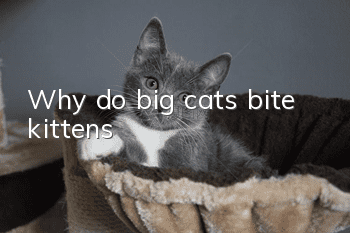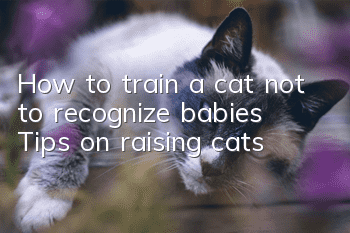What to do if a cat has pica

Solutions for cats with pica:
1. Isolate and put away all things that can be chewed. To prevent kittens from chewing items.
2. It is necessary to divert the cat’s attention from pica, and allow the cat to play with other toys such as scratching posts, or feed snacks.
3. The owner should spend more time with the kitten. You can take it for a walk outdoors, chase butterflies, or play with other kittens.
4. Pay attention to nutritional balance in food matching, and appropriately supplement some trace elements. Owners can usually make some nutritious meals for cats, such as cooking some fish soup, cooked egg yolks mixed with minced meat, and chicken breasts mixed with vegetables. Feed the cat some mud or the like.
5. Keep foreign objects away to prevent cats from accidentally eating them. The owner also needs to take good care of the cat, do not let the cat dig through the trash can, and clean up the cat's feces in a timely manner. Some cats may even eat their own feces when suffering from pica.
The reasons why cats have pica:
1. Physiological level: Cat pica is a disease caused by cats swallowing or licking items other than food. Symptoms, pathologically, can be considered a common nutritional metabolic disease, such as a lack of fat or insoluble fiber, driving cats to search for missing nutrients in strange food choices.
2. Mental level: Most sucking behaviors occur in cats that are highly dependent. They retain the dependence psychology of their childhood. Especially when kittens are weaned too early or too suddenly, they will suck on other objects. Kittens will suck on other objects to soothe themselves, and sucking will gradually turn into chewing.
3. Pica is also related to obsessive-compulsive disorder. Pica can be caused by stress, boredom, depression, or anxiety. It may also be a behavior that wants to attract the attention of the owner. If the interaction between cat and owner increases from these behaviors, the behavior may be reinforced and occur more frequently.
4. Pathological level: Nervous system diseases and diseases such as rabies or neurotoxin exposure may cause pica. Anemia, hypothyroidism, and certain diseases of the liver, pancreas, and gastrointestinal tract may cause pica behavior.
- How to toilet train a one-month-old kitten? Tips for potty training kittens
- How to solve the problem of cats not burying feces?
- Can cat grass be eaten every day?
- Cat has a lump in its belly
- How can I keep the cat from coming to the bed?
- Do cats eat less in summer? Why is the cat not eating enough?
- Why does the cat follow you?
- How to freeze-dry cats? Frequently asked questions about cat freeze-drying
- What are the symptoms of constipation in cats?
- What to do if cats get fleas on people?



